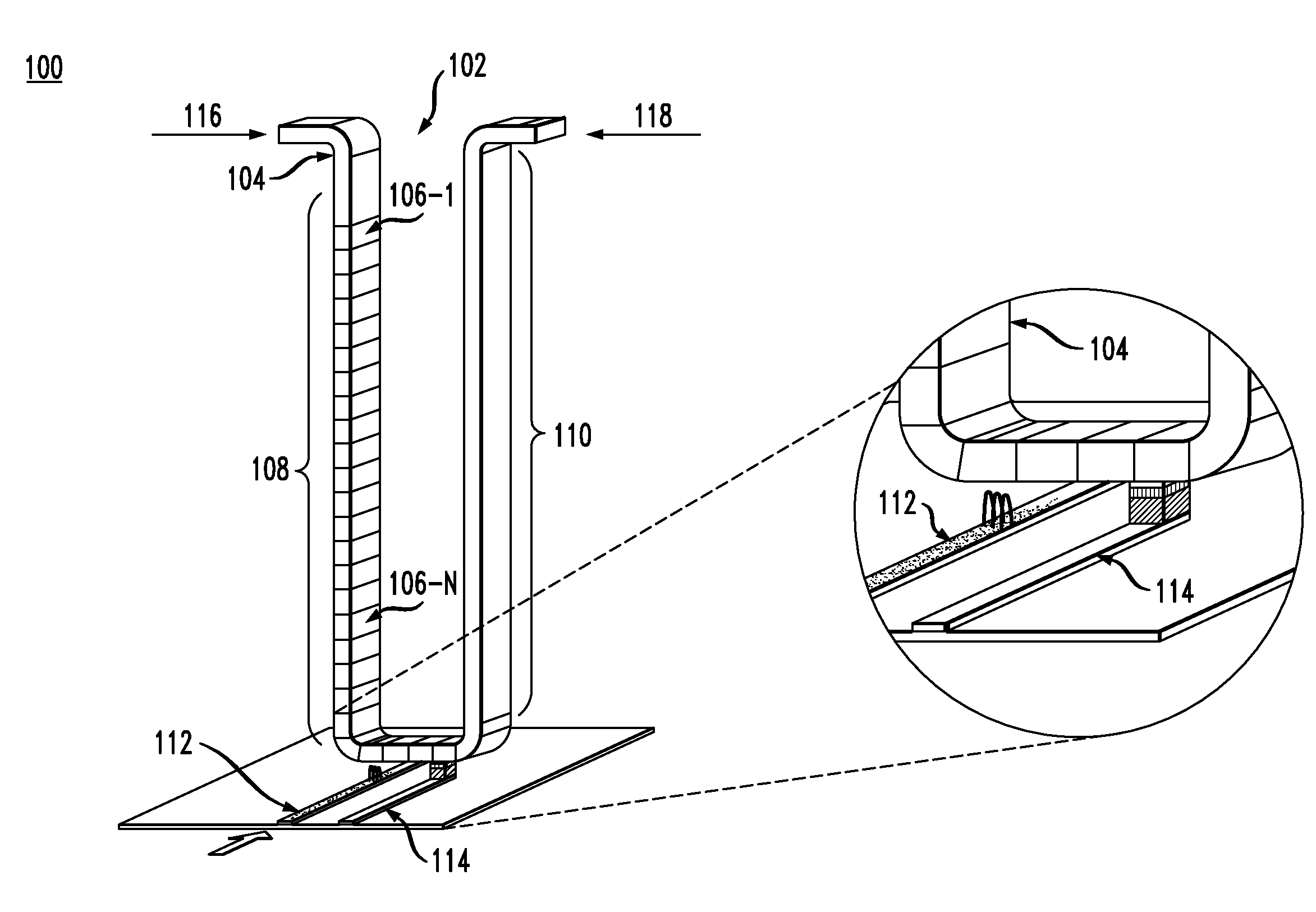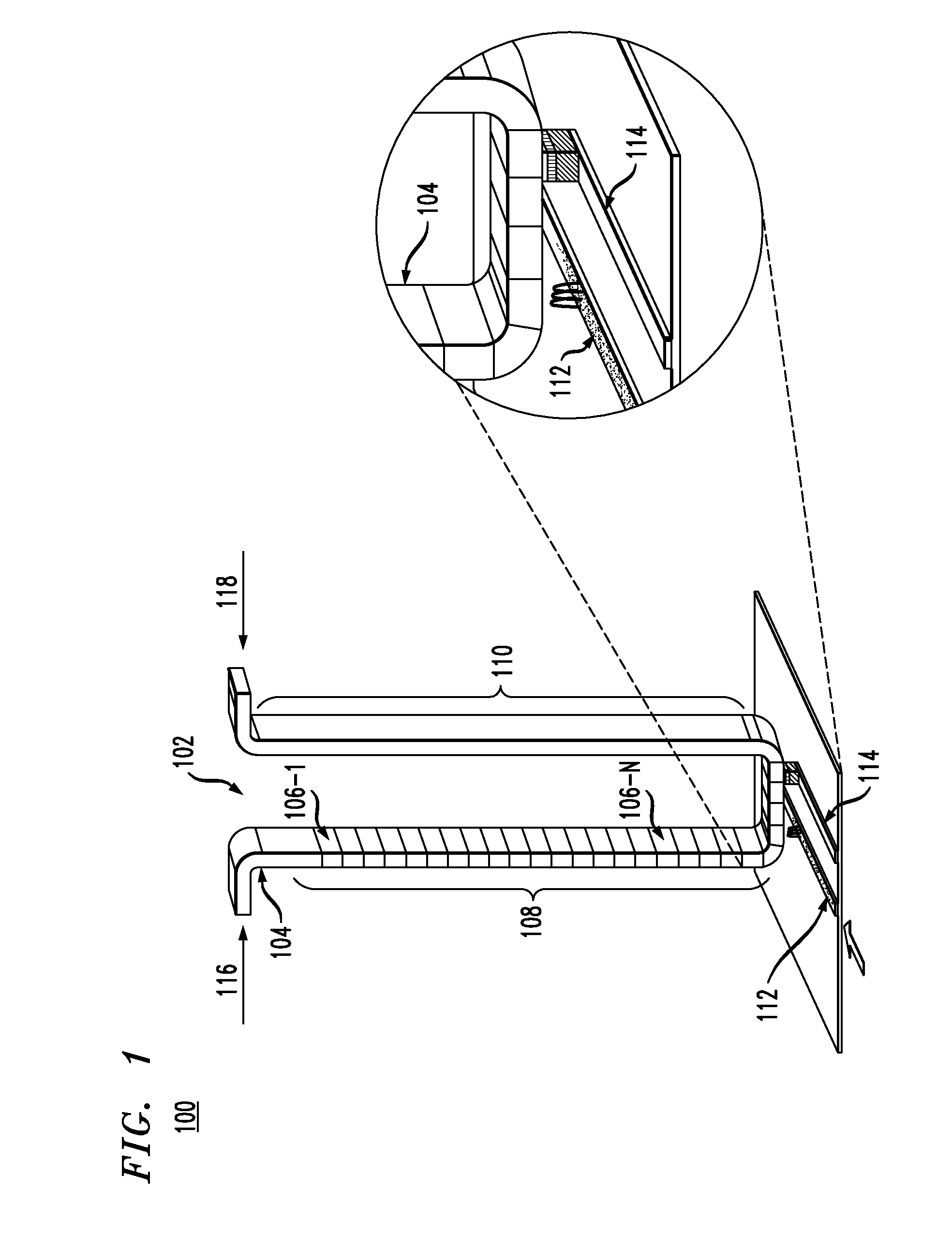Wall Nucleation Propagation for Racetrack Memory
a technology of racetrack memory and wall nucleation, applied in the field of magnetic resonance memory, can solve the problems of low capacity, low capacity, and low reliability of mechanical drives, and achieve the effect of encouraging wall nucleation and encouraging wall nucleation
- Summary
- Abstract
- Description
- Claims
- Application Information
AI Technical Summary
Benefits of technology
Problems solved by technology
Method used
Image
Examples
Embodiment Construction
[0019]The present invention will be described in conjunction with exemplary methods and apparatus for shifting data stored in racetrack memory, or alternative shift register structure. Such methods and apparatus may be used to generate consistent and controlled magnetic domain movements along a racetrack memory track. It should be understood, however, that the invention is not limited to the particular arrangements and materials described herein. For example, the techniques described herein may be applicable to any memory storage system. Further, it should be appreciated that the exemplary racetrack memory structures shown in the accompanying figures may not be drawn to scale, and that modifications to the illustrative embodiments will become apparent to those skilled in the art given the teachings herein.
[0020]The term “electric current” as used herein is intended to be construed broadly as to encompass, by way of example and without limitation, the flow of charge. An electric curr...
PUM
 Login to View More
Login to View More Abstract
Description
Claims
Application Information
 Login to View More
Login to View More - R&D
- Intellectual Property
- Life Sciences
- Materials
- Tech Scout
- Unparalleled Data Quality
- Higher Quality Content
- 60% Fewer Hallucinations
Browse by: Latest US Patents, China's latest patents, Technical Efficacy Thesaurus, Application Domain, Technology Topic, Popular Technical Reports.
© 2025 PatSnap. All rights reserved.Legal|Privacy policy|Modern Slavery Act Transparency Statement|Sitemap|About US| Contact US: help@patsnap.com



